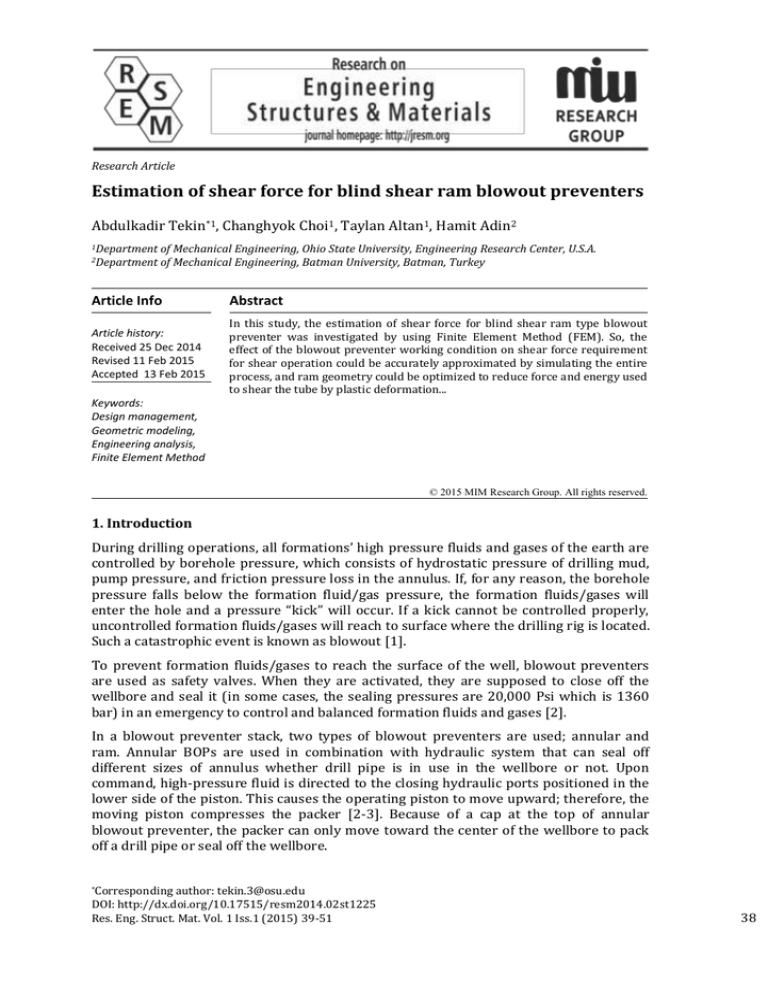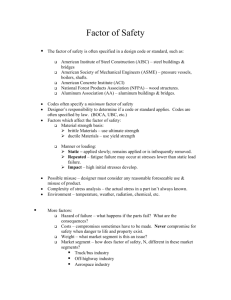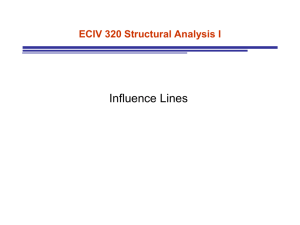
Research Article
Estimation of shear force for blind shear ram blowout preventers
Abdulkadir Tekin*1, Changhyok Choi1, Taylan Altan1, Hamit Adin2
1Department
2Department
of Mechanical Engineering, Ohio State University, Engineering Research Center, U.S.A.
of Mechanical Engineering, Batman University, Batman, Turkey
Article Info
Abstract
Article history:
Received 25 Dec 2014
Revised 11 Feb 2015
Accepted 13 Feb 2015
In this study, the estimation of shear force for blind shear ram type blowout
preventer was investigated by using Finite Element Method (FEM). So, the
effect of the blowout preventer working condition on shear force requirement
for shear operation could be accurately approximated by simulating the entire
process, and ram geometry could be optimized to reduce force and energy used
to shear the tube by plastic deformation...
Keywords:
Design management,
Geometric modeling,
Engineering analysis,
Finite Element Method
© 2015 MIM Research Group. All rights reserved.
1. Introduction
During drilling operations, all formations’ high pressure fluids and gases of the earth are
controlled by borehole pressure, which consists of hydrostatic pressure of drilling mud,
pump pressure, and friction pressure loss in the annulus. If, for any reason, the borehole
pressure falls below the formation fluid/gas pressure, the formation fluids/gases will
enter the hole and a pressure “kick” will occur. If a kick cannot be controlled properly,
uncontrolled formation fluids/gases will reach to surface where the drilling rig is located.
Such a catastrophic event is known as blowout [1].
To prevent formation fluids/gases to reach the surface of the well, blowout preventers
are used as safety valves. When they are activated, they are supposed to close off the
wellbore and seal it (in some cases, the sealing pressures are 20,000 Psi which is 1360
bar) in an emergency to control and balanced formation fluids and gases [2].
In a blowout preventer stack, two types of blowout preventers are used; annular and
ram. Annular BOPs are used in combination with hydraulic system that can seal off
different sizes of annulus whether drill pipe is in use in the wellbore or not. Upon
command, high-pressure fluid is directed to the closing hydraulic ports positioned in the
lower side of the piston. This causes the operating piston to move upward; therefore, the
moving piston compresses the packer [2-3]. Because of a cap at the top of annular
blowout preventer, the packer can only move toward the center of the wellbore to pack
off a drill pipe or seal off the wellbore.
*Corresponding
author: tekin.3@osu.edu
DOI: http://dx.doi.org/10.17515/resm2014.02st1225
Res. Eng. Struct. Mat. Vol. 1 Iss.1 (2015) 39-51
38
Tekin et al. / Research on Engineering Structures & Materials 1 (2015) 39-51
2. The Effect of Factors on Shear Force
The Distortion Energy Theory shear equation might not be sufficient with newlydeveloped drill pipes that have highly advanced material properties….
2.1. Temperature Gradient
In the offshore drilling operation, subsea blowout preventer is placed on the seabed; and
seawater temperature at this depth might be around 3-5°C, while the formation fluid
temperature that flows through the wellbore in case of blowout could be higher than
150°C. Therefore, the temperature difference between seawater that enclosed the BOP
stuck and formation fluid could be significant when the blind shear ram is activated ( Fig.
1). This temperature difference will cause the material properties to change and create a
thermal stress on the pipe and shear ram as well….
Fig. 1 Activated blind shear ram and shear sequence [5]
2.1.1 Modelling Procedure
Throughout this study, FEM (Deform 3D) is used as a tool to determine required shear
force to shear a specific drill pipe and evaluate the effect of weight of drill string on the
shearing operation. Drill pipe dimensions and properties were given in Table 1.
Table 1 Drill pipe dimensions and properties [4]
Dimensions
#
Material
110
135
S-135
S-135
O.D.
I.D.
(mm)
(mm)
5” (127) 108.61
5.5” (139.7) 121.30
Thickness Area
(mm)
(cm2)
9.195
9.169
34.03
37.60
Weight/
Yield
length
strength
ratio
(MPa)
(kg/m)
Ultimate
tensile
strength
(MPa)
Elong
%
29.02 1014.22
32.59 1052.83
1099.71
1101.78
23.1
20.0
39
Tekin et al. / Research on Engineering Structures & Materials 1 (2015) 39-51
Since the original flow stress curve of materials was not available, it was approximated
by using the Eq (1):
𝑌𝑓 = 𝐾𝜀 𝑛
(1)
where, Yf: Flow stress, ε: True strain, K: Strength coefficient, n: Strain hardening exponent
[10]…
A finite element model is developed to represent a cracked beam element of length d and
the crack is located at a distance d1 from the left end of the element as shown in Figs. 2-3.
Substituting Eqs. (3)-(4) in Eq. (7) yields the….
3.3 Friction Factor and Mesh Condition
Constant shear friction is used as a friction theory. The friction factor was taken as 0.12
since it is the average friction factor for stainless steel.
Two types of mesh conditions were used;
On the shearing position
Tetrahedral mesh
3.5 mm element size
Other position
Tetrahedral mesh
10 mm element size
As can be seen in Fig. 5, to get more accurate result, element size on effective shearing
position…
4. Results and Discussions
The simulation parameters of Task 1 and Task 2 are shown in Table 2…
5. Conclussion
In this experimental and numerical study; the thickness of plate, the diameter of circular
cutout, distance between circular cutouts and rowing orientation effect on the critical
buckling behavior of pultruded E-glass/vinylester composite beams with single or double
circular cutouts were investigated. From the results of this study, the following
conclusions can be drawn:
The maximum critical buckling load was achieved in specimen having 0o rowing
orientation angle.
The specimens having small cutout diameter were showed the maximum strength
against to buckling. So that, the maximum critical buckling load was achieved in
specimen with 2 mm cutout diameter.
References
[1] ledzki AK, Gassan J. Composites reinforced with cellulose base fibres. Progress
Polymer Science, 1999; 24: 221 – 274.
40
Tekin et al. / Research on Engineering Structures & Materials 1 (2015) 39-51
[2] Harris DC. Quantitative Chemical Analysis, W.H. Freeman and Company, New York, NY,
USA,2007.
[3]Kerciku AA, Bhattacharya S. Fixity of pile foundation. Proceedings of the 14th World
Conference on Earthquake Engineering, Bejing, China, October, 2008.
[4] Sajjad M. (2005). Evaluation of bacterial strategie. Ph.D. Dissertation, Michigan State
University,
Michigan.
41







